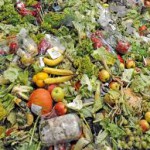40% of Food Gets Wasted: Scientific American
 “The main issue is that consumers not only rely on food dates as a reason for tossing food that is still perfectly edible and safe, but they also seem to believe that all foods will be safe prior to the expiration dates, so they will continue to eat food that has actually been stored or handled unsafely.”
“The main issue is that consumers not only rely on food dates as a reason for tossing food that is still perfectly edible and safe, but they also seem to believe that all foods will be safe prior to the expiration dates, so they will continue to eat food that has actually been stored or handled unsafely.”
“The report stems from a larger report we worked on, the Wasted Report, where we looked at the drivers and extent of food waste across the country. We landed on expiration dates as one topic that’s driving food waste, and a system that’s not really serving consumers or industry at all.”
“Across the country, about 40% of food never gets eaten. When you think about the fact that in the US, 80% of our fresh water consumption, over half of our land area, and 10% of our energy budget goes to putting food on our tables. If we’re not eating that food, that’s a terrible use of those resources. In the UK, a study of British households showed that in homes, 20% of the waste that is really avoidable was coming from confusion over expiration dates. Our estimate is very back of the envelope, but if we apply that in the US, households could be spending between $275 and $455 dollars a year as a family unit on food that they’re throwing out prematurely.”
Emily Broad Lieb, who directs the Harvard Law School Food Law and Policy Clinic, an expert on the legal system that contributes to this situation, and Dana Gunders, NRDC’s resident scientist on food waste talk about food waste in the US.
Read the whole article here:
